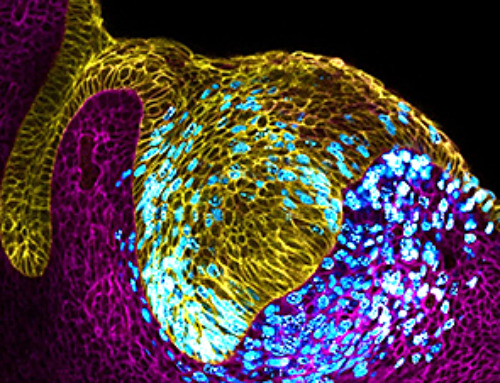MIT physicists have developed a new method that could someday provide a way to customize multilayered nanoparticles with preferred properties, potentially for use in cloaking systems, displays, or biomedical devices. It may also help physicists handle a range of thorny research issues, in ways that could in certain cases be orders of magnitude faster than present approaches.
The innovation employs computational neural networks, a form of artificial intelligence, to “learn” how a nanoparticle’s structure influences its behavior, in this case, the way it scatters various colors of light, based on numerous training examples. Then, having learned the association, the program can fundamentally be run backward to design a particle with a preferred set of light-scattering properties — a process known as inverse design.
The results are being published in the journal Science Advances, in a paper by MIT senior John Peurifoy, research affiliate Yichen Shen, graduate student Li Jing, professor of physics Marin Soljačić, and five others.
While the method could eventually result in practical applications, Soljačić says, the research is mainly of scientific interest as a way of predicting the physical properties of a range of nano-engineered materials without necessitating the computationally intensive simulation processes that are usually used to handle such issues.
Soljačić says that the objective was to study at neural networks, a field that has witnessed a lot of progress and produced excitement in recent years, to see, “whether we can use some of those techniques in order to help us in our physics research. So basically, are computers ‘intelligent’ enough so that they can do some more intelligent tasks in helping us understand and work with some physical systems?”
Image Credit: Vanderbilt University
News This Week
Deadly bacteria show thirst for human blood: the phenomenon of bacterial vampirism
Some of the world's deadliest bacteria seek out and feed on human blood, a newly-discovered phenomenon researchers are calling "bacterial vampirism." A team led by Washington State University researchers has found the bacteria are [...]
Organ Architects: The Remarkable Cells Shaping Our Development
Finding your way through the winding streets of certain cities can be a real challenge without a map. To orient ourselves, we rely on a variety of information, including digital maps on our phones, [...]
Novel hydrogel removes microplastics from water
Microplastics pose a great threat to human health. These tiny plastic debris can enter our bodies through the water we drink and increase the risk of illnesses. They are also an environmental hazard; found [...]
Researchers Discover New Origin of Deep Brain Waves
Understanding hippocampal activity could improve sleep and cognition therapies. Researchers from the University of California, Irvine’s biomedical engineering department have discovered a new origin for two essential brain waves—slow waves and sleep spindles—that are critical for [...]
The Lifelong Cost of Surviving COVID: Scientists Uncover Long-Term Effects
Many of the individuals released to long-term acute care facilities suffered from conditions that lasted for over a year. Researchers at UC San Francisco studied COVID-19 patients in the United States who survived some of the longest and [...]
Previously Unknown Rogue Immune Key to Chronic Viral Infections Discovered
Scientists discovered a previously unidentified rogue immune cell linked to poor antibody responses in chronic viral infections. Australian researchers have discovered a previously unknown rogue immune cell that can cause poor antibody responses in [...]
Nature’s Betrayal: Unmasking Lead Lurking in Herbal Medicine
A case of lead poisoning due to Ayurvedic medicine use demonstrates the importance of patient history in diagnosis and the need for public health collaboration to prevent similar risks. An article in CMAJ (Canadian Medical Association [...]
Frozen in Time: How a DNA Anomaly Misled Scientists for Centuries
An enormous meteor spelled doom for most dinosaurs 65 million years ago. But not all. In the aftermath of the extinction event, birds — technically dinosaurs themselves — flourished. Scientists have spent centuries trying [...]















Leave A Comment